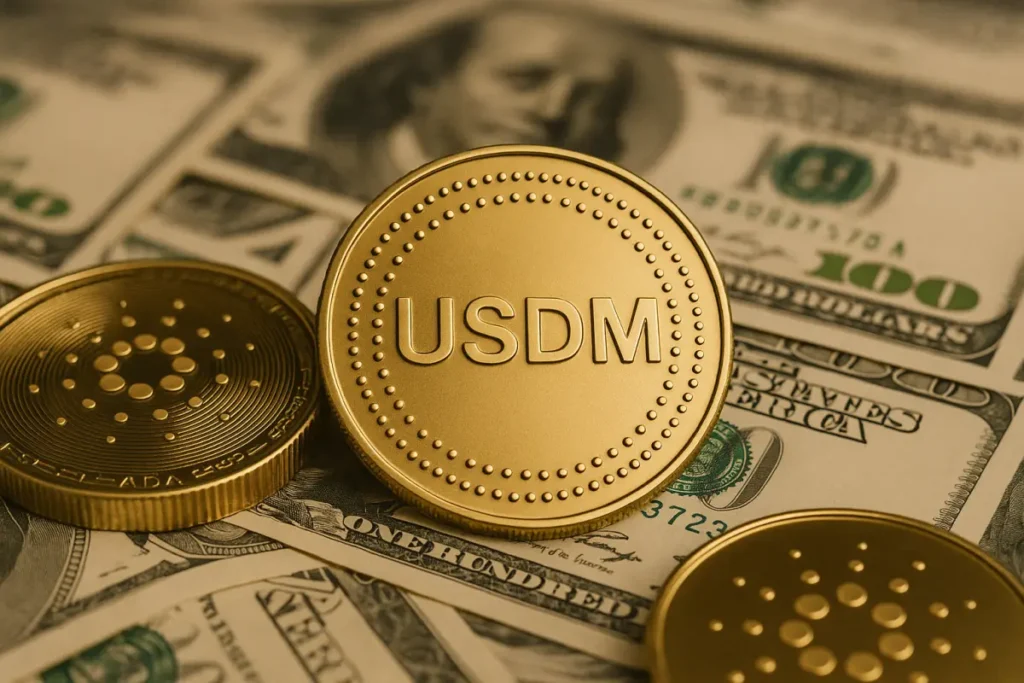Cardano Founder Proposes $100M ADA Conversion to Native Stablecoin USDM to Boost DeFi and Liquidity
Cardano founder Charles Hoskinson has proposed converting $100 million worth of ADA from the Cardano treasury into USDM, a Cardano-native stablecoin. The bold move, he claims, could generate $5 million to $10 million in annual returns, providing a fresh stream of passive income and strengthening the blockchain’s DeFi infrastructure.

Cardano Founder Proposes $100M ADA Conversion to Native Stablecoin USDM to Boost DeFi and Liquidity
Cardano founder Charles Hoskinson has proposed converting $100 million worth of ADA from the Cardano treasury into USDM, a Cardano-native stablecoin. The bold move, he claims, could generate $5 million to $10 million in annual returns, providing a fresh stream of passive income and strengthening the blockchain’s DeFi infrastructure.
In a recent community update, Hoskinson emphasized that this strategy could dramatically enhance liquidity across the Cardano network. He pointed to the potential for a self-sustaining ecosystem, where treasury investments in stablecoins produce yield that can be reinvested back into ADA, ensuring ongoing growth and innovation.
With Cardano’s treasury currently holding approximately 1.7 billion ADA—worth over $650 million—Hoskinson argues that these idle assets could be mobilized to create long-term value. The proposed 5–10% annual return could be reinvested to support protocol development, improve liquidity, and attract new users to the ecosystem.
USDM, the proposed stablecoin issued by Mehen, is fully backed 1:1 by U.S. dollars and operates entirely on-chain. Hoskinson believes that introducing a robust, native stablecoin could give Cardano a similar liquidity surge seen in other blockchain ecosystems like Ethereum and Solana.
He also criticized the community’s hesitance, pointing out that Cardano’s governance body, Intersect, was designed precisely to facilitate such treasury-backed initiatives. Highlighting missed opportunities—such as failing to bring USDC to Cardano—Hoskinson called on stakeholders to act more decisively.
He suggested that venture capital firms, including prominent names like a16z and Pantera, might be interested in backing these liquidity efforts, further boosting treasury funds and ecosystem growth.
On a broader scale, Hoskinson shared ambitions for Cardano to pioneer a privacy-preserving stablecoin. Speaking on eToro’s Conversation with Leaders podcast on May 9, he emphasized the importance of maintaining regulatory compliance while enabling privacy through selective disclosure mechanisms.
Although privacy coins have faced regulatory crackdowns in jurisdictions like the EU, Hoskinson believes there’s a compliant path forward for private stablecoins—one that balances transparency and user privacy without compromising legal standards.
Looking ahead, Hoskinson announced a shift in Cardano’s development strategy. Moving away from its traditionally cautious pace, Cardano aims to adopt a more open, agile model that welcomes external contributions and accelerates innovation—all while maintaining a strong focus on network security.
Hoskinson’s vision marks a pivotal moment for Cardano, potentially setting the stage for a major transformation in its liquidity, governance, and global adoption.

Delegate Your Voting Power to FEED DRep in Cardano Governance.
DRep ID: drep12ukt4ctzmtf6l5rj76cddgf3dvuy0lfz7uky08jfvgr9ugaapz4 | We are driven to register as a DRep by our deep dedication to the Cardano ecosystem and our aspiration to take an active role in its development, ensuring that its progress stays true to the principles of decentralization, security, and community empowerment.DELEGATE VOTING POWER!









